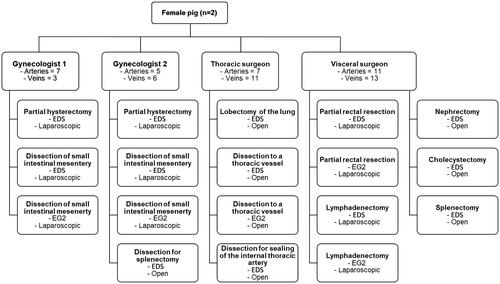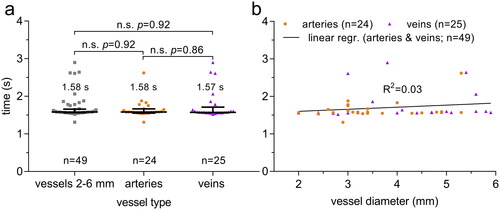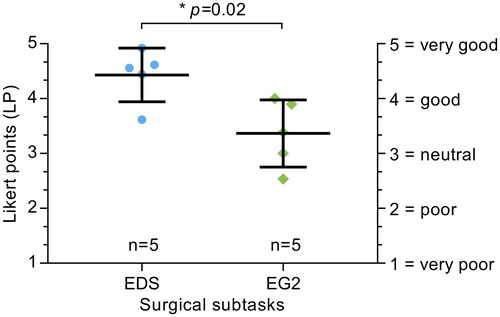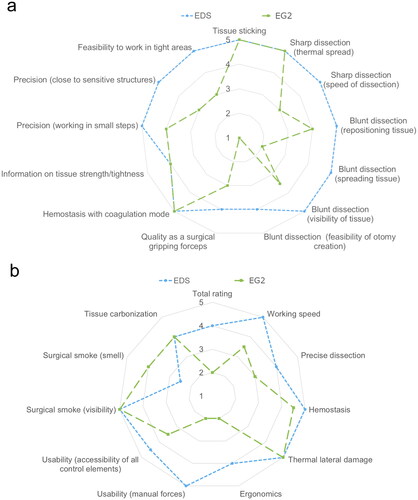Figures & data
Figure 1. Overview of the in vivo study design including open or laparoscopic surgical subtasks per operator. Four experienced operators, two gynecologists, one visceral surgeon and one thoracic surgeon performed 13 surgical subtasks. EDS = Erbe Dissector, EG2 = ENSEAL G2.

Table 1. Intraoperative and postoperative questionnaire (Likert items).
Figure 2. For the Erbe Dissector (EDS) with a dedicated EDS generator mode (a) Vessel sealing success rate ex vivo for renal arteries and microscope image of sealed vessel with the seal zone and lateral thermal spread (b) Vessel sealing success rate in vivo for vessels with diameters 2-6 mm (filled), arteries (dotted), veins (hatched) and all vessels (no filling).

Figure 3. (a) Seal and cut time (median with IQR) with the Erbe Dissector (EDS) with a dedicated EDS generator mode for vessels with diameter 2-6 mm (squares), arteries (points) and veins (triangles) (b) Linear regression (solid line) of the seal and cut time and vessel diameter for the pooled group of arteries and veins.

Supplemental Material
Download MS Word (33.6 KB)Data availability statement
The data presented in this study are available on reasonable request from the corresponding author.


